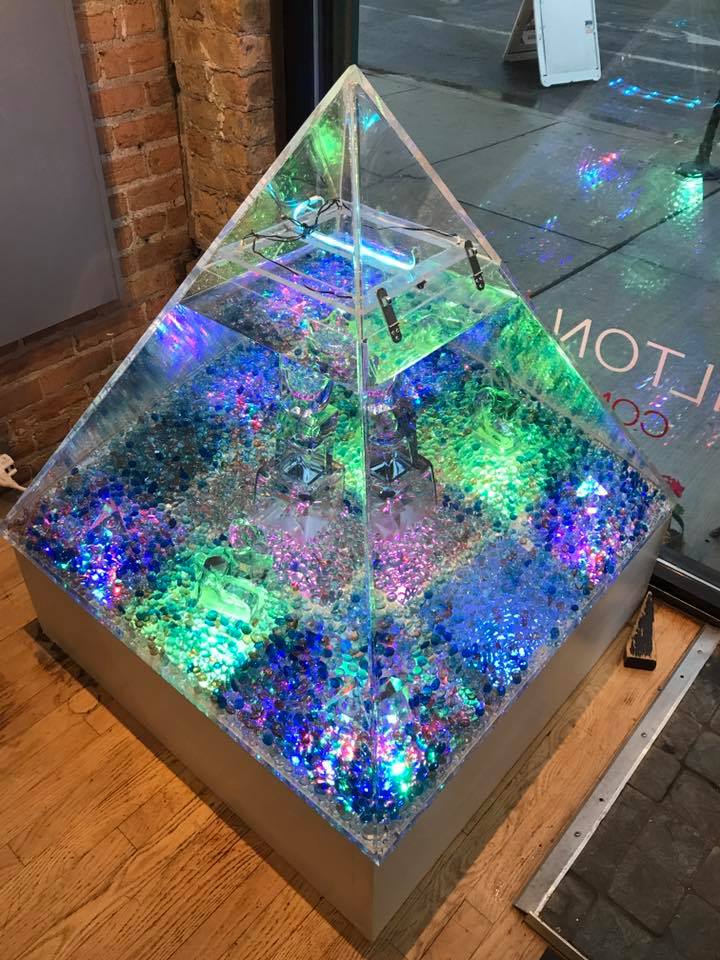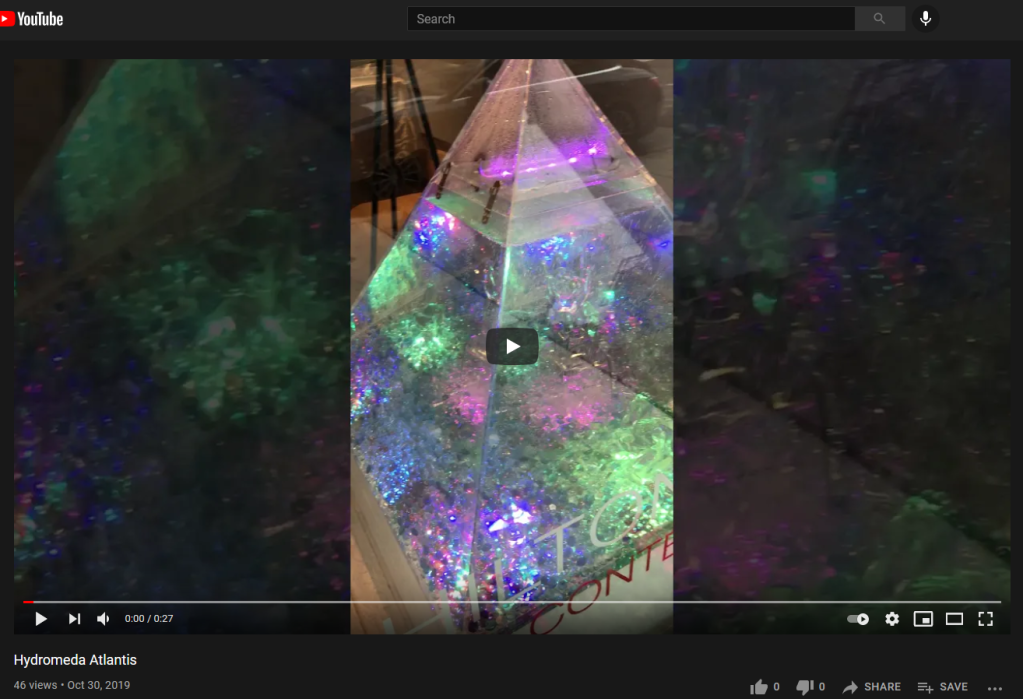
By Terry Poulos, Scientiquity founder
(Editor’s note: This blog was originally published on October 22, 2019)
What’s the true color of the universe? Einstein would say it’s all relative. Our eyes deceive us. They’re receptors of the full spectrum of electromagnetic waves which produce an emergent perception of color and images. The seat of those images is our “mind’s eye.” Color and all visual images in our mind’s eye are a construct. Repeat: Color is constructed, not an inherent property of the universe. But there is a species-wide consensus. We’ll get to that shortly.
Artists, myself no exception, are naturally fascinated by color. We mix and match and experiment with a myriad of varying pigments to produce arrays of images designed to inspire and provoke visceral thought and emotion. But what do we really see in color when we claim that the dress is blue (a recent viral internet phenomenon), a person has green eyes, or that blood is red? Red, blue, and green to whom? More to our point, to what?
The scientific definition is that light for human perception, and thus color, is a manifestation of the visible spectrum of electromagnetic waves, which is a range of wavelengths between infrared and ultraviolet light. You’ve probably heard of a few others in the spectrum which we cannot perceive without the assistance of mechanical instruments – microwave, x-ray, shortwave, ultraviolet, gamma, and infrared are a few examples. Human eyes only perceive those between ultraviolet and infrared (400-700 nanometers in length).
Humans, ever since our origin in antiquity, have evolved concurrently with the field of existence. We’re in the universe – part of it – ergo as Depak Chopra and Menas Kafatos wrote in their recent best-seller, “You are the Universe.” This is not simply a manner of speaking, it’s scientific fact. Nothing within any system is ever divorced from or independent of that system. With that knowledge, we’re forced to concede our ignorance of the overwhelming majority of reality. Why? Because we can never view it from outside the system. There is no privileged vantage point!
Knowing this, how do we trust red is red, blue is blue, and green is green (the three primary colors; all else are gradients)? It is true the human species has evolved a common consensus on the various colors, albeit we all see colors in ever-so-slightly different ways. There’s that pesky relativity again. We see a potentially infinite gradient of electromagnetic waves. My sincere apologies if that’s not romantic in the tradition of the Renaissance masters, but that is exactly the way the universe operates.

To underscore that last point, a neurological examination of the genders revealed a significant percentage of women see up to one-thousand times more color gradients than the average man, owing to their having a more evolved system of optical rods and cones and functions having more degrees of freedom. No wonder husbands worldwide are pathetically dependent on their wives to mix and match outfits! Levity aside, you’d think with their enhanced visual prowess women would be the foremost artists globally. But alas, that is a historically male-dominated field with one-hundred Claude Monet’s for every Georgia O’Keeffe. We can chalk up most of that unjust imbalance to male chauvinism. But, as the modern saying goes, “time’s up.” Change is upon us, to be sure. And according to science, rightfully so.
Back to the original question! What’s the color of the universe? Two studies on the color of the universe and the color of our solar system shed new `light’ on the subject. In the early 2000’s, scientists proclaimed that the universe is turquoise, which excited me personally because I love a good patina! According to “Big Bang” cosmology, the universe is 13.8 billion years old, an awful lot of time to develop a rich blue-green color. But along came a more advanced study showing the universe is generally a beige hue, which is still good because I love the yellow-ish color of ancient manuscripts! As for our solar system, science is saying green again. Apparently, the life-giving force for humans, oxygen, carries with it one of the primary colors. So maybe the universe isn’t quite a patina but our part of it, the Milky Way and specifically our solar system, is exhibiting green and beige. Close enough for this fan of the science of antiquity (Scientiquity)!
In any event, we must be honest about our ignorance. Color is relative to human perception mechanisms, and even intra-species it’s relative from one person to the next. Who’s the grand arbiter? Where’s this great da Vinci or O’Keeffe in the sky to decree the substrate of reality? Nobody knows because it’s all relative and there is no privileged place to even decipher such things to begin with. All that said, I insist the dress has to be beige!
Terry Poulos is a Chicago-area writer, archaeological historian, artist and geometer whose investigations focus primarily on physics, fractal topology, and Number Theory
Scientiquity. All images and concepts herein © 2022